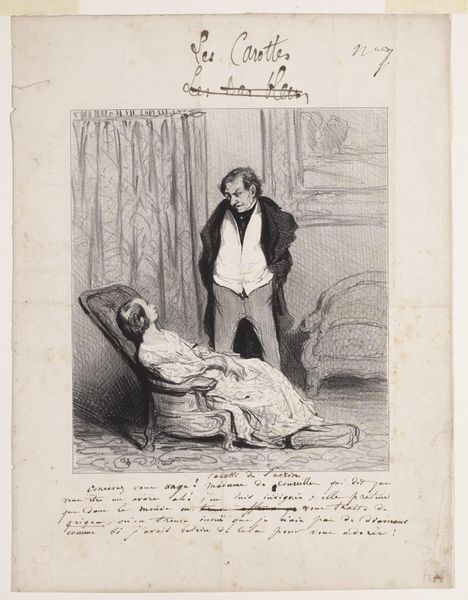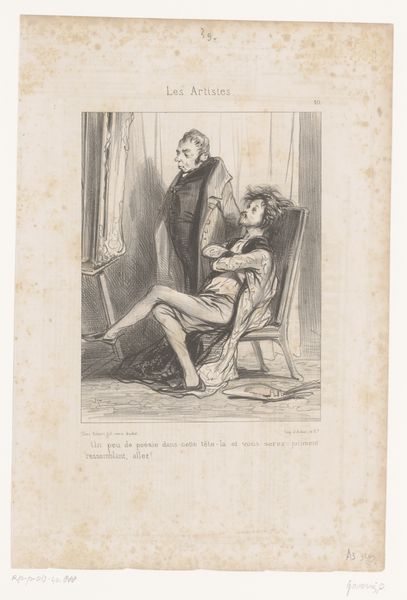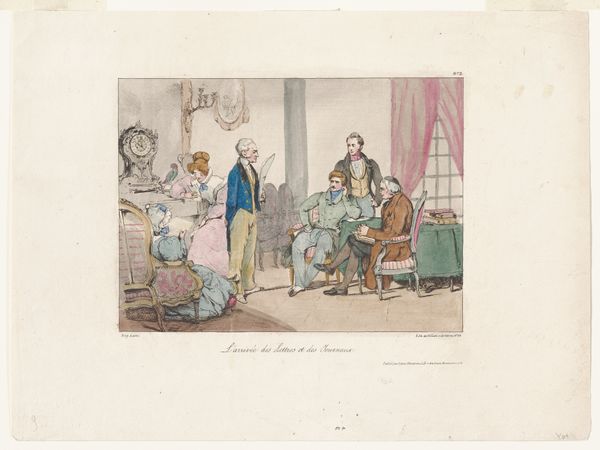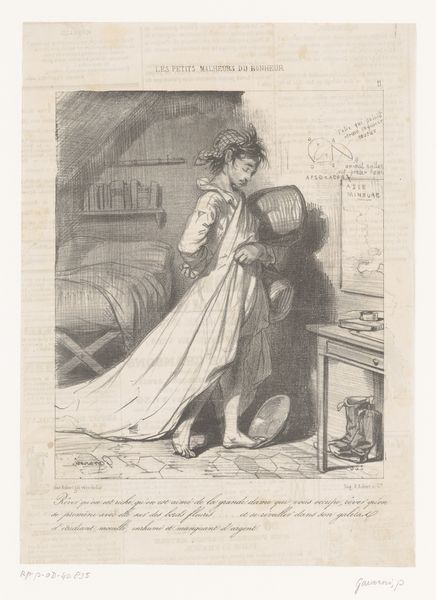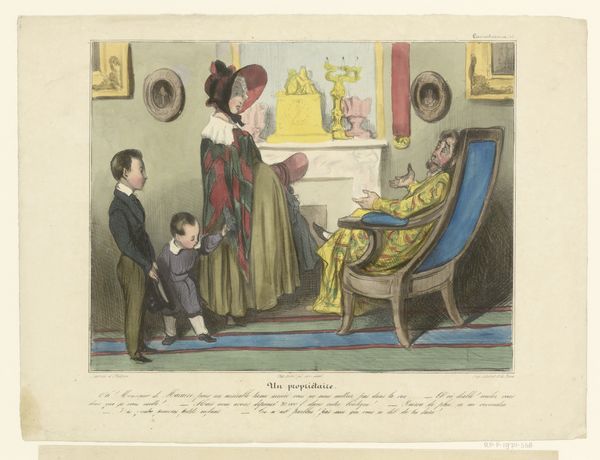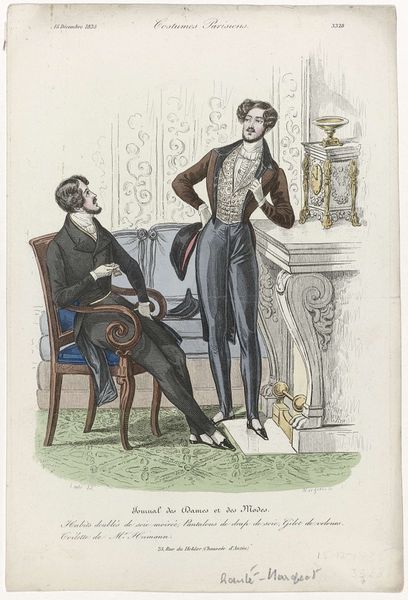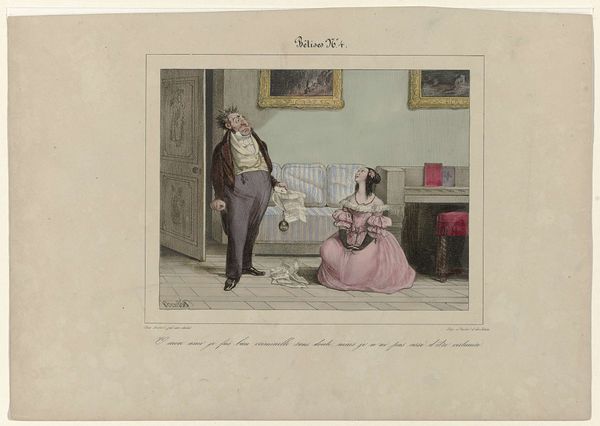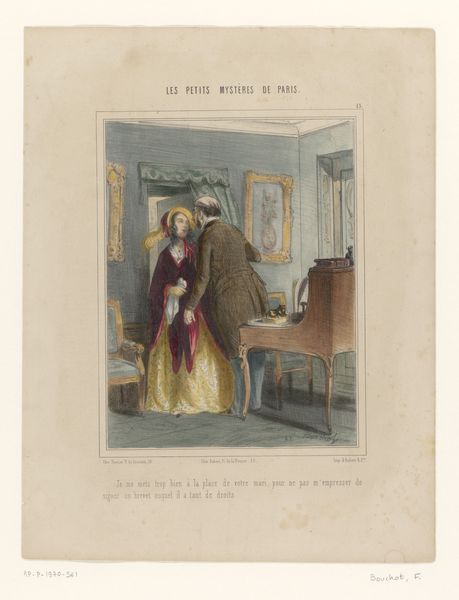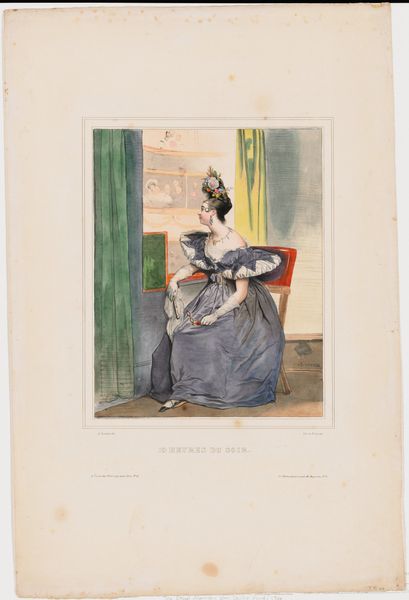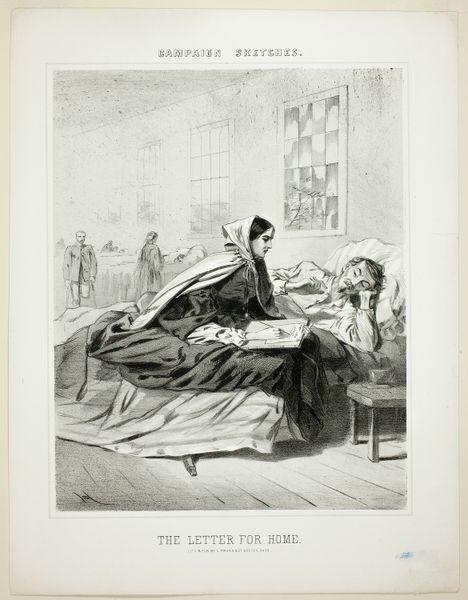
lithograph, print
#
portrait
#
lithograph
# print
#
caricature
#
historical fashion
#
romanticism
#
genre-painting
#
watercolor
Dimensions: height 259 mm, width 320 mm
Copyright: Rijks Museum: Open Domain
Editor: This is "Robert Macaire wijst uitnodiging af," or "Robert Macaire Refusing an Invitation," a lithograph made by Honoré Daumier in 1837, currently residing in the Rijksmuseum. There's a striking contrast in posture and expression between the reclining man and the standing figure; the whole thing seems subtly satirical. How do you interpret this work? Curator: The image is very telling about the social anxieties of the time. Daumier's "Robert Macaire" isn't just a portrait; it's a critique of the bourgeoisie in 19th-century France. The figure reclining is, in fact, Macaire, a fictional con man who represents the perceived deceit and moral corruption associated with the emerging middle class. Notice how the image plays with notions of respectability and social climbing through caricature. What does the setting suggest to you? Editor: The opulent decor suggests wealth and status. It feels like the artist is highlighting the materialism of the time. Curator: Exactly! And by having Macaire, a known swindler, in this setting, Daumier questions the very foundations of this wealth and status. Are these people truly virtuous, or are they, like Macaire, just skilled at presenting a convincing facade? Think about the impact this kind of imagery would have had in a society undergoing rapid social and economic change. The print served as a accessible and impactful form of social commentary. Editor: So, it's less about the individual and more about the broader societal critique? The role of art to reflect the historical environment from Daumier's critical perspective... Curator: Precisely. This piece encapsulates how art becomes a powerful tool to negotiate evolving public and social identities. Daumier’s satire invited viewers to critically examine the values of their society, a role that lithographs, distributed through newspapers and journals, played remarkably well. Editor: I hadn't considered the socio-political context so deeply. Thanks for shedding light on how Daumier used his art to comment on the shifts in 19th-century society.
Comments
No comments
Be the first to comment and join the conversation on the ultimate creative platform.


